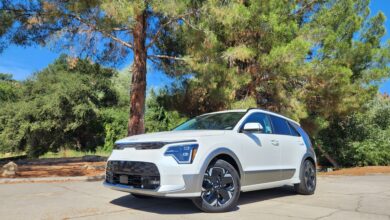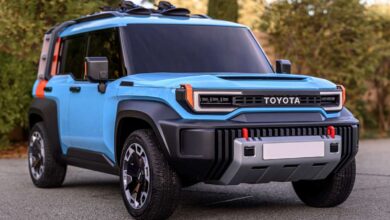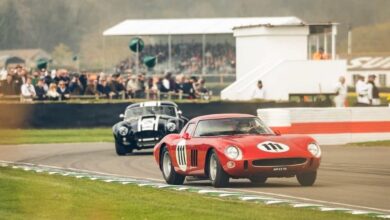Brough Superior SS100 Alpine Grand Sports 1928

1928 Brough Superior SS100 Alpine Grand Sports
With Ian Fallon
Britain before the war had a thriving motorcycle industry. But while the majority of road bikes are handy single-cylinder machines for those with the money, the best and most expensive is the Brough Superior SS100.
Some things never change and today the Brough Superior SS100 stands at the pinnacle of collectability and remains one of the most expensive motorcycles available.
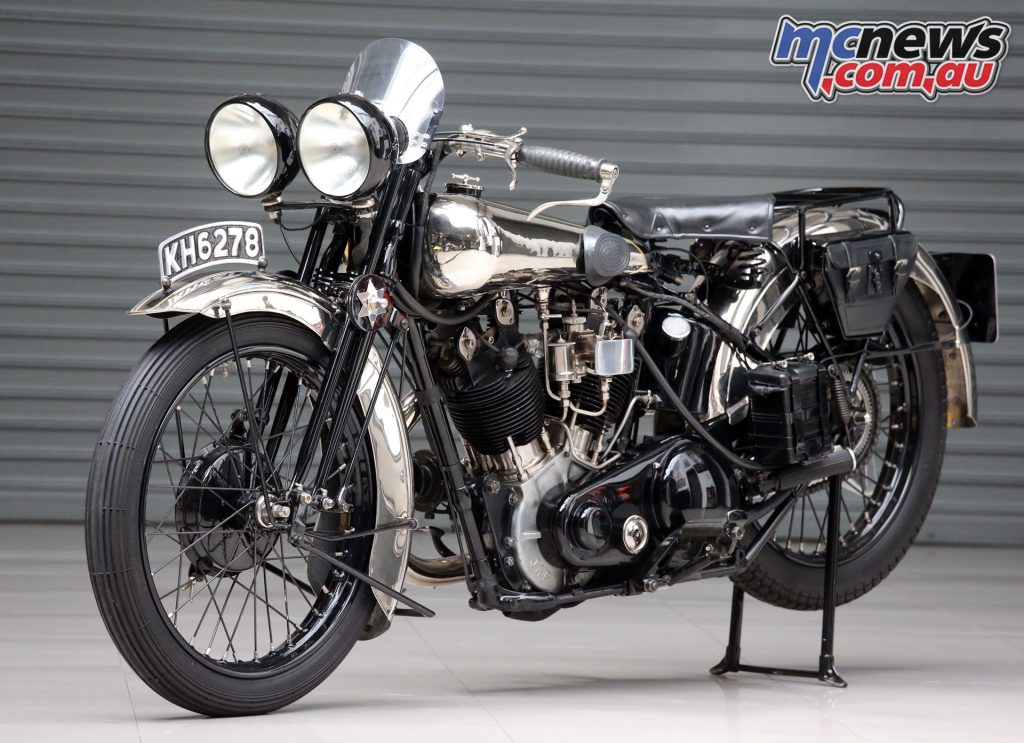
George Brough originally joined forces with his father William to produce Brough motorcycles. After World War I, George wanted to build a luxury motorcycle for gentlemen and William did not, so in 1919, George, 29, decided to build it on his own.
In the 1920s, from a small establishment on Haydn Road, Nottingham in the North of England, George Brough, set out to build the ultimate luxury motorcycle to “serve the connoisseurs of riders who will… Own the best and fastest machine on the road. “
Unlike the flat-engined William’s Brough, George opted for a V-twin and immediately called his Brough Superior the “Rolls-Royce of Motorcycles”. By all accounts, William was unimpressed by the title, commenting that perhaps this made his motorcycle “Brough Inferior”.
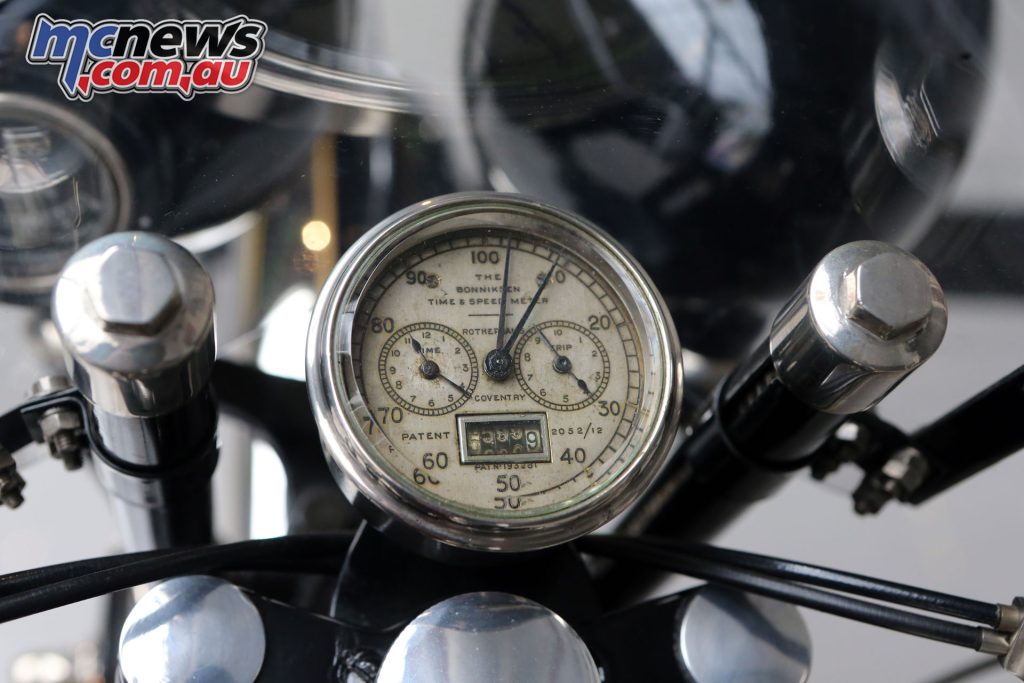
George also wanted his machines to be suitable for sidecar mounting, and at the time the only competition for large twin motorcycles came from American manufacturers. Proud of the finishing touches of its motorcycles, the nickel plating is evident everywhere, even on the fuel tank.
At a time when motorcycles had a rectangular fuel tank under the top frame tube, all Broughs had a distinctive round saddle-style fuel tank. Unlike other motorcycles of the time, the Brough Superior was fitted with license plates, horns, acetylene lights and a generator.
The Brough Superior frame and some cycle parts are manufactured in-house, while the engine, magnets and carburetor are sourced from outside suppliers. The advantage of this plan is that Brough is insulated from excessive design and tooling costs, but the downside is that the company is dependent on quality and supply from outside concerns.
The first Brough was the SS80, powered by a 1000 cc side-valve V-twin specially manufactured by JA Prestwich (or JAP), and in 1924 the engine was redesigned to include overhead valves. The new 50-degree V-twin overhead valve design features two camshafts, each with two cams, and the enclosed cranks that run on ball bearings. The two valves are facing each other at a 90 degree angle and lubricated by a continuous loss mechanical oil pump.
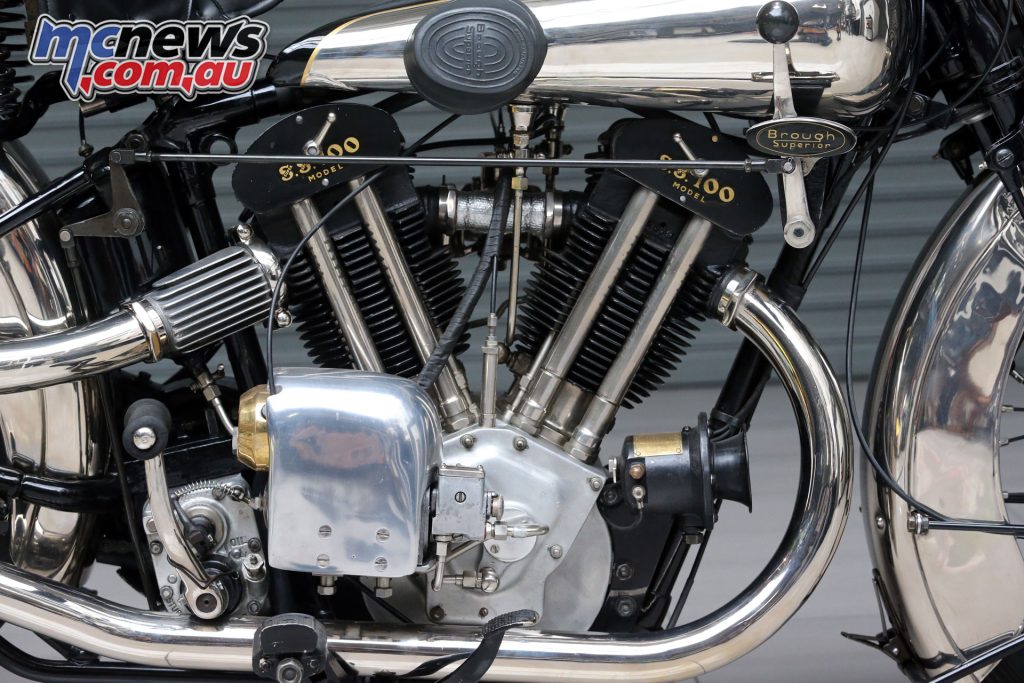
Brough housed the new JAP engine in a twin rack frame developed from Bert le Vack’s record-breaking brake machine that hit 182 km/h at Brooklands in 1924. Sturney-Archer supplied the three-speed manual transmission. power level and the SS100 debuted at the 1924 Olympia Show, each of which was guaranteed to be timed at more than 100 mph (161 km/h).
George Brough is more than just a company director. With his personal 1000 cc SS80 racer “Old Bill”, George won more than 50 speed and climb tests in 1922 and 1923. In 1923, the front tire blew and the bike broke down. crossed the finish line on his own at 140 km/h, with George slipping behind.
In 1925, Brough and his engineer friend Harold Karslake patented the Castle front fork, which resembled the fork used on Harley-Davidson motorcycles rather than the Brampton that distinguished the company’s other motorcycles. Older brother. Later that year, the SS100 evolved into an even sportier version, the Alpine Grand Sports.
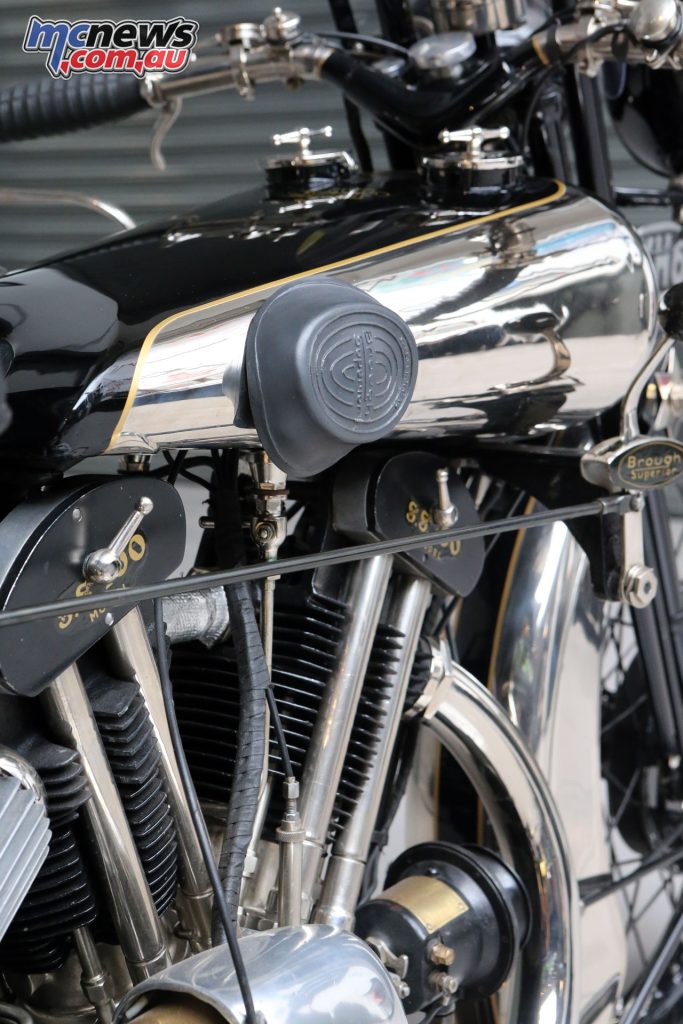
The 995 cc engine now has a longer stroke (80 x 99 mm) with a rolling bottom end and Brough and FP Dickson finished second in the Alpine Test, both taking the title. Eventually, Alpine Grand Sports evolved into Pendine, named after the Welsh track and guaranteed to exceed 110 mph (177 km/h).
In 1928 (like the example here), an optional frame with a triangular rear section and under-seat springs was offered on the Alpine Grand Sports. The Achilles heel of all Broughs is a pressed steel single shoe brake, simply because George prefers going faster than stopping.
During the 1930s, the SS100 had a paddle shifter, and in November 1933 it received a new twin carburetor dual-magnet JAP engine and a four-speed transmission. But eventually George Brough grew tired of dealing with JAP’s quality control problems and switched the SS100 to a Matchless 50-degree V-twin overhead valve.
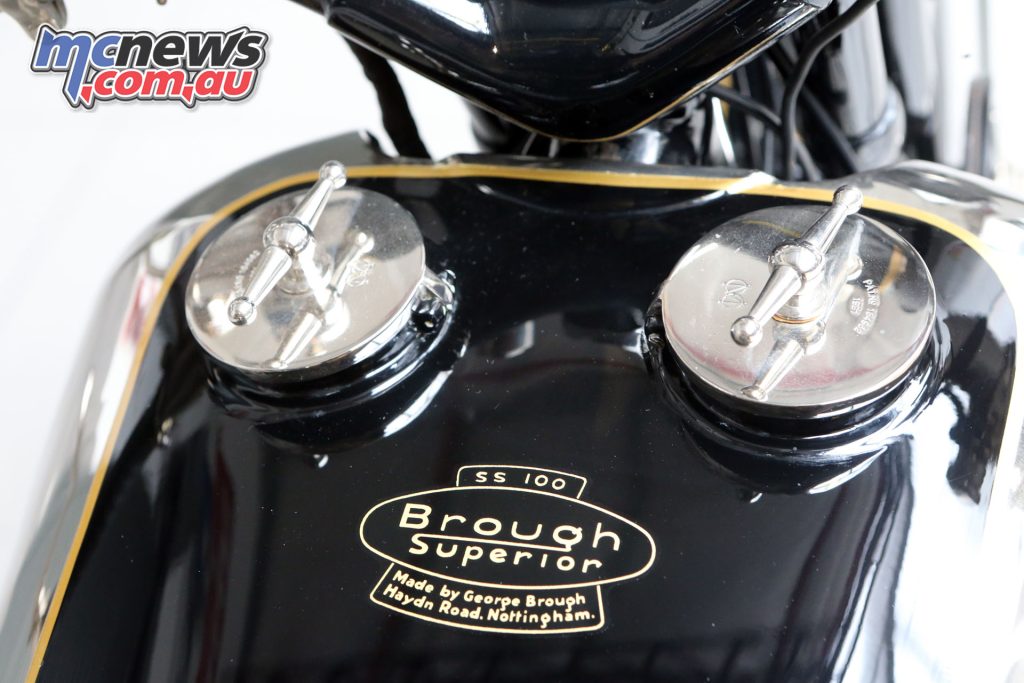
The Matchless engine wasn’t as powerful as the JAP, but more refined, and the SS100 remained in production as the spearhead of the lineup until motorcycle production ceased in 1940. Other Broughs emphasized quiet and comfortable, but the SS100 is clearly performance-oriented, and because of these, JAP-enabled versions are considered more desirable.
Brough Superiors were also very successful speed record machines and in 1937 Eric Fernihough achieved 273 km/h in an SS100. Noel Pope still holds the record for solo motorcycle and sidecar racing at Brooklands with speeds of 200 km/h and 170 km/h respectively.
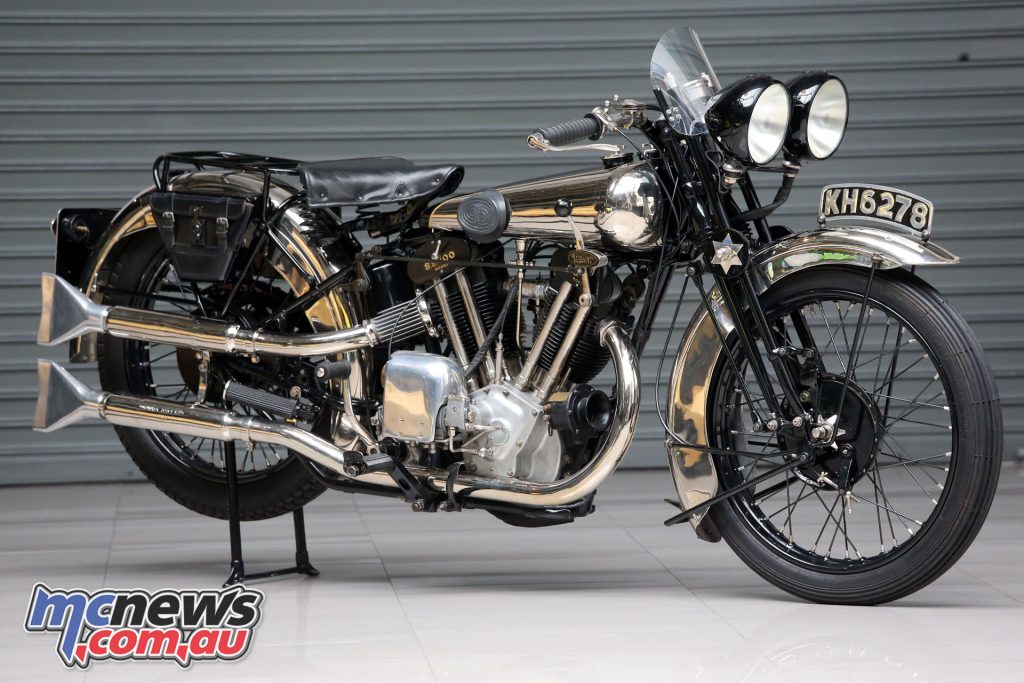
Why is Brough Superior so revered? In these mass production days, it’s hard to imagine how Brough Superior survived. Between 1920 and 1940, only about 3,000 Brough Superiors were built, with a handful of SS100s, and the company was run almost exclusively by one man.
Every aspect of Brough Superior puts it beyond the reach of casual motorcyclists. George Brough takes pleasure in building just one high-quality motorcycle instead of ten cheaper ones, and his obsession with quality and performance has ensured that his motorcycles remain among the best. most coveted car.
Always built to the highest standards, they represent a bygone era; one where quality is first and profit second. There is also the celebrity element. The most famous Brough Superior is that of Colonel TE Lawrence, the “Lawrence of Arabia”. Lawrence is a personal friend of George Brough and a motorcycle enthusiast.
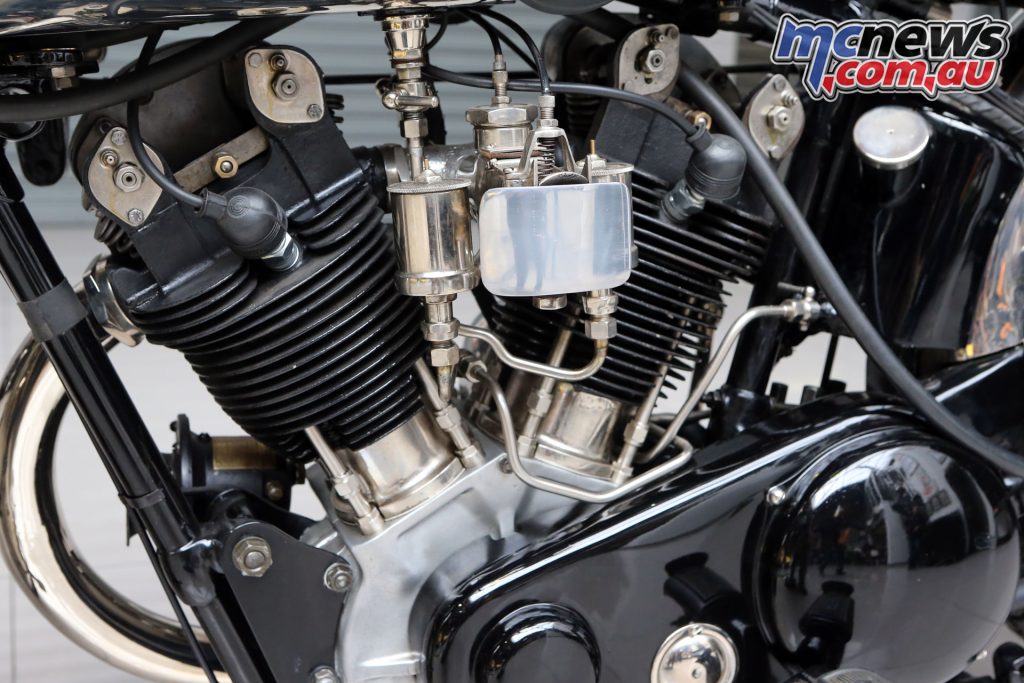
He rode Broughs for over thirteen years, regularly visiting the Nottingham construction to discuss modifications and specifications. It was in the SS100 that Lawrence died in May 1935 when he was driving away from two cycling boys on a country road in Dorset near his cottage in Clouds Hill.
Specifications of Brough Superior SS100 Alpine Grand Sports
| Specifications of Brough Superior SS100 Alpine Grand Sports | |
| Engine | 988 cc JAP four-stroke V-twin, side valve, single carburetor |
| Power | 45 hp @ 4500 rpm |
| Transmission process | Three-speed manual transmission |
| Suspended | Castle top link fork, hard rear |
| brake | Drum – Before/After |
| wheel | Say, 3.00 x 20in |
| Weight | 199.5kg |
| Max speed | 169 km/h |
